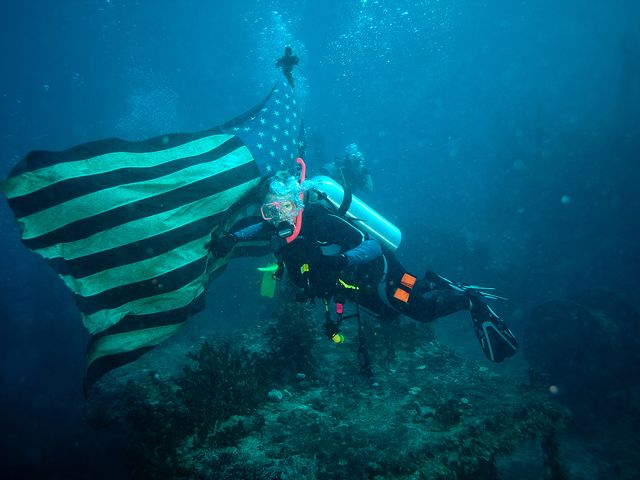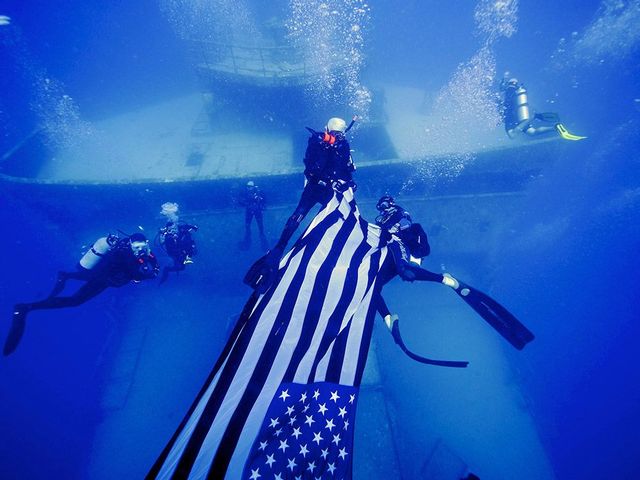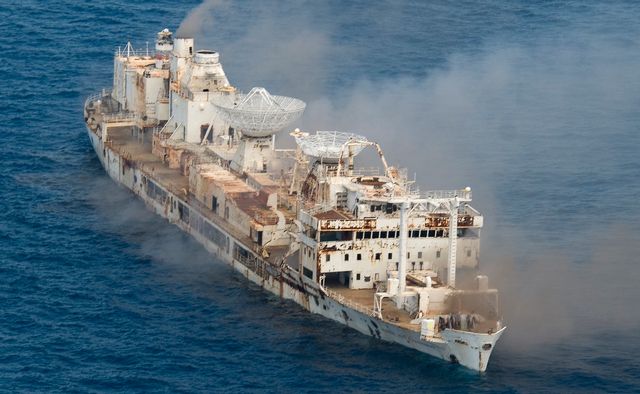Vandenberg Celebrates 10 Years as Florida Keys Artificial Reef
Properly prepared artificial reefs help take human pressure off natural coral reefs, providing alternative structures for scuba divers to explore as well as additional marine habitats. They increase species populations and provide a platform for education and research, while preserving the history and heritage of the vessel.
Ten years ago, on May 27, 2009, following more than a decade of planning and funding totaling $8.6 million, the USNS Gen. Hoyt S. Vandenberg that once tracked space launches off Cape Canaveral, Florida, and monitored Soviet missile launches during the Cold War, was transformed from military vessel to artificial reef and purposely sunk off the Florida Keys, thus preserving a bit of U.S. history.
The 523-foot-long former U.S. Air Force missile-tracking ship became the world’s second-largest vessel to be intentionally sunk for this purpose. Located approximately 7 miles south of Key West International Airport in nearly 150 feet of water in the Florida Keys National Marine Sanctuary, Vandenberg is also the southernmost asset of the Florida Keys Wreck Trek, a string of nine vessels from Key Largo to Key West that recreational divers can explore.
Marine engineers had predicted Vandenberg would sink in less than three minutes. They were correct. Hundreds of jubilant onlookers watched it slip beneath the surface to arrive at the bottom of the ocean in a stunning in 1 minute, 45 seconds.
For thousands of visiting wreck-certified divers eager to explore “Vandy,” the site is a bucket list, world-class experience. After an opening dive on the wreck, first-timers are hooked. Experienced aquanauts agree that all qualified divers should experience it and judge for themselves.
Sportsmen also delight in the densely inhabited surrounding blue waters, with sailfish and pelagics that provide angling action.
Sitting still beneath the sea over the last decade, Vandenberg has bloomed into a timeless circle of life, luring big schools of spectacular species of fish and invertebrate life to the decks of this landmark ship. Its steps, railings, iconic satellite dishes and superstructure are glazed over with Gorgonian corals, sponges and sea urchins.
Austrian artist Andreas Frank considered the shipwreck a blank slate that was temporarily transformed through his fantastical photographic artistry. In 2011 he turned it into a subsea “gallery” by covering the outer hull with digitally layered images of people merged with composite shots of the ship.
Discover the complete story of this unique vessel and its journey from ship to shipwreck to artificial reef at fla-keys.com/diving/vandenberg/. Then celebrate Vandenberg’s 10-year “on-the-bottom” anniversary by booking a dive on it with one of Key West’s professional dive operators.



